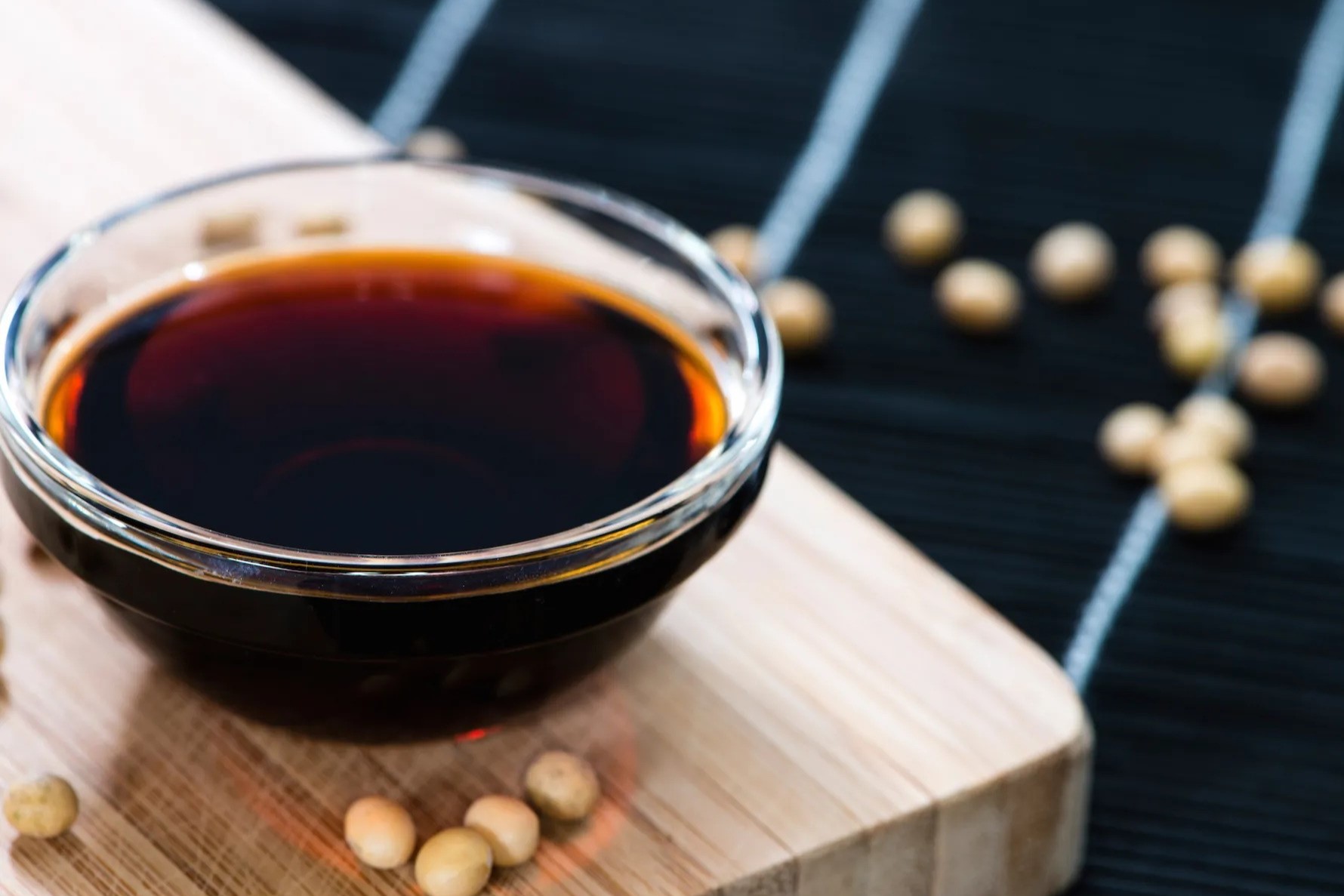Home>Food and Cooking>The Truth About Soya Sauce: Is It Really Halal?


Food and Cooking
The Truth About Soya Sauce: Is It Really Halal?
Published: February 1, 2024
Discover the truth about soya sauce and its halal status. Get expert insights on food and cooking. Uncover the facts now!
(Many of the links in this article redirect to a specific reviewed product. Your purchase of these products through affiliate links helps to generate commission for Noodls.com, at no extra cost. Learn more)
Table of Contents
Introduction
Soya sauce, also known as soy sauce, is a fundamental ingredient in many Asian cuisines, renowned for its rich umami flavor and versatility in culinary applications. This dark, savory condiment has been a staple in kitchens for centuries, adding depth and complexity to a wide array of dishes. However, despite its widespread use, there are questions surrounding the halal status of soya sauce that have sparked discussions and raised concerns among those who adhere to halal dietary guidelines.
The halal status of soya sauce is a topic of considerable importance for individuals who follow Islamic dietary laws. Understanding the origins, ingredients, and production processes of soya sauce is crucial in determining its compliance with halal standards. This article aims to delve into the truth about soya sauce, shedding light on its origins, ingredients, and its halal status. By exploring these aspects, individuals seeking to adhere to halal dietary principles can make informed decisions about incorporating soya sauce into their culinary repertoire.
The Origin of Soya Sauce
Soya sauce, a quintessential component of Asian cuisine, has a rich and storied history that dates back over 2,000 years. Its origins can be traced to ancient China, where it was initially developed as a means of preserving and enhancing the flavor of food. The creation of soya sauce is steeped in tradition and ingenuity, reflecting the resourcefulness of early culinary artisans.
The inception of soya sauce can be attributed to the discovery of fermenting soybeans, a process that led to the development of a savory, flavorful liquid. This transformative fermentation process involved combining soybeans, roasted grain, brine, and Aspergillus oryzae mold, which catalyzed the breakdown of proteins and carbohydrates, ultimately yielding a dark, fragrant sauce.
Over time, the production and refinement of soya sauce spread throughout East Asia, with each region adding its own unique twist to the traditional recipe. In Japan, for instance, soya sauce evolved into distinct varieties such as shoyu and tamari, each offering nuanced flavors and characteristics. Similarly, in Korea, ganjang emerged as a beloved counterpart to its Chinese and Japanese counterparts, boasting its own distinct taste profile.
The widespread adoption of soya sauce across Asia can be attributed to its ability to impart depth and complexity to a myriad of dishes. From stir-fries and marinades to dipping sauces and dressings, soya sauce has become an indispensable element of Asian culinary traditions, permeating both home kitchens and professional establishments.
As soya sauce transcended borders and permeated global culinary landscapes, its profound influence on flavor profiles and cooking techniques became increasingly evident. The versatility of soya sauce has made it a beloved ingredient in a multitude of cuisines, showcasing its remarkable adaptability and enduring appeal.
In essence, the origin of soya sauce is a testament to the ingenuity and culinary prowess of ancient civilizations. Its evolution from a humble condiment to a global culinary phenomenon underscores its enduring relevance and significance in the realm of gastronomy. Understanding the rich historical tapestry from which soya sauce emerged provides valuable insights into its cultural significance and enduring legacy in the culinary world.
The Ingredients of Soya Sauce
Soya sauce, a quintessential component of Asian cuisine, derives its distinctive flavor and aroma from a meticulous combination of fundamental ingredients. The traditional production of soya sauce involves a harmonious blend of soybeans, wheat, salt, and a fermenting agent, which collectively undergo a transformative process to yield the beloved condiment.
Soybeans
At the heart of soya sauce lies the humble soybean, a legume that serves as the primary building block of this savory condiment. Soybeans are meticulously selected and subjected to a series of intricate processes, including steaming, roasting, and fermentation, to unlock their inherent flavors and nutritional properties. The natural oils and proteins within soybeans contribute to the robust umami taste and rich texture that characterize authentic soya sauce.
Wheat
In addition to soybeans, wheat plays a pivotal role in the creation of soya sauce, imparting nuanced flavors and contributing to the sauce's distinctive aroma. The inclusion of wheat in the production process introduces a layer of complexity and depth, enhancing the overall taste profile of the sauce. Through careful roasting and blending, wheat synergizes with soybeans to yield a harmonious amalgamation of flavors that distinguishes soya sauce from other condiments.
Salt
A crucial component in the fermentation process, salt serves as a preservative while also influencing the development of soya sauce's characteristic taste. The precise balance of salt is integral to the fermentation process, regulating the growth of beneficial microorganisms and shaping the final flavor profile of the sauce. The judicious application of salt is essential in fostering the gradual transformation of soybeans and wheat into a savory, aromatic elixir.
Fermenting Agent
Central to the alchemical process of soya sauce production is the fermenting agent, typically a mold known as Aspergillus oryzae. This microorganism initiates the fermentation of soybeans and wheat, breaking down complex compounds and fostering the development of the sauce's distinct flavor compounds. The transformative influence of the fermenting agent is instrumental in imbuing soya sauce with its signature umami essence and contributing to its revered status in culinary traditions.
In essence, the artful combination of soybeans, wheat, salt, and a fermenting agent forms the cornerstone of soya sauce production, yielding a time-honored condiment that has captivated palates across the globe. The intricate interplay of these ingredients underscores the meticulous craftsmanship and artistry involved in creating this beloved culinary essential.
The Halal Status of Soya Sauce
The halal status of soya sauce is a topic of significant importance for individuals adhering to Islamic dietary laws. The term "halal" refers to what is permissible or lawful in traditional Islamic law, encompassing various aspects of life, including food and drink. When it comes to soya sauce, determining its halal status involves a comprehensive understanding of its production process, ingredients, and potential contact with non-halal substances.
Soya sauce is primarily composed of soybeans, wheat, salt, and a fermenting agent, such as Aspergillus oryzae mold. While these core ingredients are inherently halal, concerns may arise regarding the potential use of alcohol in the production process, as well as the risk of cross-contamination with non-halal substances. In traditional soya sauce production, the fermentation process may involve the presence of alcohol, which raises questions about its compliance with halal dietary guidelines.
Additionally, the use of wheat in soya sauce production may prompt scrutiny, particularly in relation to the type of wheat utilized and the possibility of cross-contact with non-halal grains. Given these considerations, individuals seeking to ascertain the halal status of soya sauce are encouraged to exercise due diligence and consider various factors that may impact its compliance with halal standards.
Moreover, the global market presents a diverse array of soya sauce products, each with its own production methods and variations. This diversity underscores the importance of discerning consumers to scrutinize product labels, certifications, and manufacturing practices to ensure alignment with halal requirements. By engaging with reputable halal certification authorities and staying informed about industry standards, individuals can make informed decisions regarding the consumption of soya sauce within the framework of halal dietary principles.
In essence, the halal status of soya sauce hinges upon a nuanced evaluation of its ingredients, production processes, and adherence to halal guidelines. By fostering awareness and vigilance, individuals can navigate the landscape of soya sauce products with a discerning eye, empowering themselves to make choices that align with their halal dietary preferences. This proactive approach underscores the significance of informed consumerism and the pursuit of culinary practices that resonate with personal beliefs and values.
Factors to Consider for Halal Soya Sauce
When assessing the halal status of soya sauce, several crucial factors warrant careful consideration to ensure adherence to Islamic dietary principles. These factors encompass the production process, ingredients, potential cross-contamination, and the presence of alcohol, all of which can significantly impact the halal compliance of soya sauce.
-
Production Process: Understanding the methods employed in the production of soya sauce is essential. Traditional fermentation processes may involve the use of alcohol as a catalyst for the breakdown of soybeans and wheat. However, modern production techniques have evolved to address these concerns, with some manufacturers implementing alcohol-free fermentation methods to cater to halal dietary requirements. It is imperative for consumers to seek out products that align with these updated practices to ensure the halal integrity of the soya sauce.
-
Ingredients: Scrutinizing the ingredients list is fundamental in determining the halal status of soya sauce. While soybeans and wheat are inherently halal, the presence of alcohol or non-halal additives can compromise the suitability of the product for consumption within a halal diet. By thoroughly examining the ingredients and seeking out products that adhere to halal standards, individuals can make informed choices that resonate with their dietary preferences.
-
Certifications and Labels: Seeking out reputable halal certifications and labels on soya sauce products can provide valuable assurance of their compliance with halal requirements. These certifications are issued by recognized authorities and serve as a testament to the adherence of the product to stringent halal guidelines. By prioritizing products bearing credible halal certifications, consumers can navigate the market with confidence and certainty.
-
Cross-Contamination: The potential for cross-contact with non-halal substances, such as alcohol or non-halal grains, is a critical consideration. Manufacturers implementing robust quality control measures to prevent cross-contamination play a pivotal role in upholding the halal status of their products. Consumers are encouraged to seek out information regarding the manufacturing processes and facilities to gauge the effectiveness of these measures.
-
Consumer Awareness: Empowering consumers with knowledge about halal dietary requirements and the intricacies of soya sauce production fosters informed decision-making. By staying informed about industry standards, engaging with credible sources, and actively seeking out halal-compliant products, individuals can navigate the marketplace with discernment and confidence.
In essence, the halal status of soya sauce hinges on a multifaceted evaluation encompassing production methods, ingredients, certifications, and consumer awareness. By considering these factors with diligence and mindfulness, individuals can make informed choices that align with their halal dietary preferences, ensuring that the soya sauce they incorporate into their culinary endeavors resonates with their beliefs and values.
Conclusion
In conclusion, the halal status of soya sauce is a multifaceted consideration that intertwines the rich historical tapestry of this beloved condiment with the imperative of adhering to Islamic dietary principles. The origins of soya sauce, rooted in ancient culinary traditions, underscore its enduring significance and pervasive influence across diverse culinary landscapes. From its inception in ancient China to its global proliferation, soya sauce has remained a culinary staple, enriching an extensive array of dishes with its distinctive umami flavor.
The meticulous craftsmanship involved in soya sauce production, encompassing the artful combination of soybeans, wheat, salt, and fermenting agents, reflects the artisanal dedication that has defined this time-honored condiment. However, the quest to ascertain the halal status of soya sauce demands a nuanced understanding of its ingredients, production processes, and potential implications for adherence to halal dietary guidelines.
As individuals navigate the landscape of soya sauce products, considerations such as the presence of alcohol, the risk of cross-contamination, and the significance of reputable halal certifications emerge as pivotal factors in making informed choices. By embracing a proactive approach to consumer awareness and engaging with credible sources, individuals can empower themselves to align their culinary practices with their halal dietary preferences.
Ultimately, the quest for halal soya sauce transcends mere culinary considerations, embodying a profound connection to personal beliefs, values, and cultural traditions. By cultivating a discerning approach to selecting soya sauce products that resonate with halal dietary principles, individuals honor the rich heritage of this iconic condiment while embracing culinary practices that reflect their deeply held convictions.
In essence, the exploration of the halal status of soya sauce serves as a testament to the harmonious coalescence of culinary artistry, cultural heritage, and conscientious consumerism. Through informed decision-making and a steadfast commitment to upholding halal dietary principles, individuals can savor the rich flavors of soya sauce while remaining steadfast in their adherence to cherished traditions and values.













